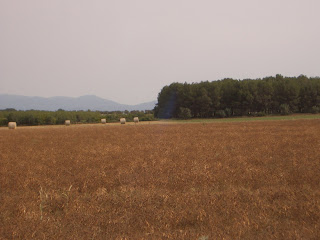
The Albera range. A nature area of national interest
The Albera range is the name given to the eastern end of the Pyrenees that runs from El Pertús to the sea. It is a region with a well-defined personality, a typically Mediterranean landscape and ecology. It separates the wide Empordà plain from the Roussillon lowlands, and part of the French-Spanish border has run along the crest of this range since the Treaty of the Pyrenees was signed in 1659. The Albera range is about 25 km long and its highest peaks are Puig Neulós (1257 m), Puig dels Pastors (1167 m), Puig dels Quatre Termes (1127 m) and Pic de Sallafort (975 m). At the seaward end the hills become gradually lower, the eastern tip being no more than a very rugged stretch of coast with high cliffs. The Albera belongs to the part of the Pyrenees composed of granite and schist rocks of metamorphic origin. These are low mountains and the passes are easily negotiated so that they have served as thoroughfares for countless generations. There are areas with spectacularly beautiful mountain landscapes of granite rock.
Information and visits
Entry to the nature area is free of charge. However it is advisable to call in first at the Centre d'lnformació del Paratge Natural, located in the former presbytery of the village of Espolla (c/ Mossèn Amadeu Sudrià, s/n, 17753 Espolla. Tel. 972/ 54 50 39). Information is also available from:
Rabós d'Empordà town hall (Tel. 972 563082)
Espolla town hall (Tel. 972 563179)
Municipal Tourist Office, La Jonquera (Tel. 972 554005)
The Biblioteca Municipal Carles Bosch de la Trinxeria (c/ Major, 101, 17700 la Jonquera. Tel. 972 554338) has a section devoted to documentation, studies and bibliography on the Albera range.
Route maps availabe from the information centre in Espolla. (That's the one I know anyway).
Els Alberes : a bit of history
The need to protect certain ecosystems in the Albera range was acknowledged in a plan drawn up in 1931 by the pre-Civil War Catalan Generalitat (autonomous government). However, it was not until 10 March 1986 that the present Catalan parliament passed a law making certain parts of the southern side of the range in the north of the Alt Empordà a nature area of national interest. The total surface area of 3428 hectares is divided into two sectors. One is the Requesens-Baussitges sector (12 639 ha), which stretches from Pic de Llobregat to Pla de les Eres and comprises the headwater valley of the Anyet river (in the borough of La Jonquera) and the upper Orlina valley (Espolla). The other is the Sant Quirze-Balmeta sector (789 ha) which runs from Puig de la Calma to the Teixó Col and includes the Sant Quirze valley (Rabós d'Empordà). Requesens castle, which was entirely restored at the end of the 19th century by the Rocabertí family, and part of the ancient borough of Baussitges, are in the former, and the imposing ruins of the former monastery of Sant Quirze de Colera are located in the latter area.
The protected area includes two partial nature reserves. One, located at the head of the Orlina river, covers an area of 395 ha and affords protection to the beech and oak woods between the Col of Els Emigrants and Pic de Sallafort, the most easterly of their kind on the southern side of the Pyrenees. The other, between the Sant Quirze valley and the source of the Valleta, occupies 580 ha. Its function is to protect various reptile species, notably the Mediterranean tortoise (or Hermann's tortoise). This second nature reserve was enlarged in 1987 by the addition of a further 680 ha lying beyond the south western boundary of the nature area. Another nature reserve, the wood of La Maçana, is located between Puig dels Quatre Termes and Pic de Sallafort on the northern slope of the range, which is under French administration.

Sant Quirze de Colera Monastery














